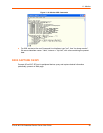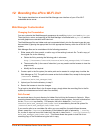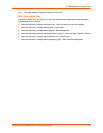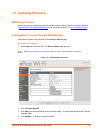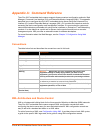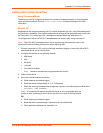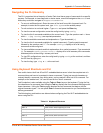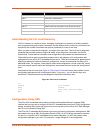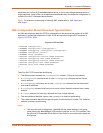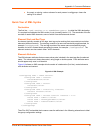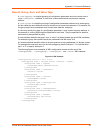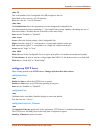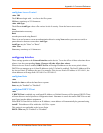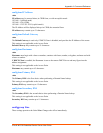
Appendix A: Command Reference
xPico® Wi-Fi® Embedded Device Server User Guide 73
Understanding the CLI Level Hierarchy
The CLI hierarchy is a series of levels. Arranging commands in a hierarchy of levels provides a
way to organize and group similar commands, provide different levels of security, and reduce the
complexity and number commands and options presented to a user at one time.
When you start a command line session, you begin at the root level. This level can be password
protected and provides access to high level status, a few diagnostic commands, and the file
system level. Further device information and configuration are accessed via the enable level.
The enable level can also be password protected and is the gateway to full configuration and
management of the xPico Wi-Fi embedded device server. There are commands for gathering and
effecting all elements of device status and configuration, as well as commands that take you to
additional levels. For instance, tunnel specific status and configuration is found under the "tunnel"
level, and network specific status and configuration commands are found under the "configuration"
level.
Commands at the root level (see Figure A-2 Root Level Commands below) do not affect current
configuration settings and are not displayed initially. If you type ?, you will see the login sub-
commands. These commands provide diagnostic and status information only.
Figure A-2 Root Level Commands
>?
config file system
help status
tlog wlan scan [network-name]
xml exit
Configuration Using XML
The xPico Wi-Fi embedded device server provides an Extensible Markup Language (XML)
interface that you can use to configure xPico Wi-Fi embedded device servers. Every configuration
setting, excluding XML import and export, that can be issued from the xPico Wi-Fi Web Manager
and CLI can be specified using XML.
The XPico Wi-Fi embedded device server can import and export configuration settings as an XML
document known as an XML Configuration Record (XCR). An XCR can be imported or exported
via the CLI or the xPico Wi-Fi embedded device server filesystem. An XCR can contain many
configuration settings or just a few. For example, it might change all of the configurable
Ctrl + k Deletes from the current position to the end of the line
Ctrl + l Redraws the command line
Ctrl + n Displays the next line in the history
Ctrl + p Displays the previous line in the history
Ctrl + u Deletes entire line and places cursor at start of prompt
Ctrl + w Deletes one word back
Ctrl + z Exits the current CLI level
Key Combination (continued) Description



